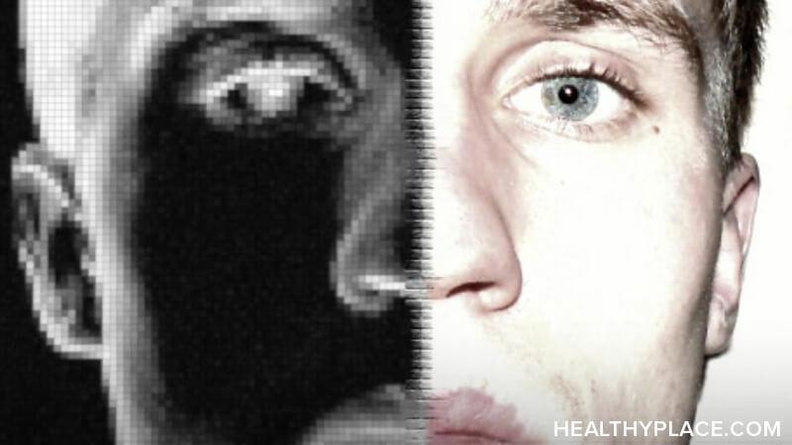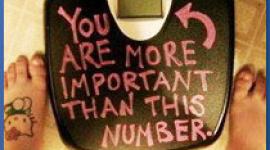Body Dysmorphic Disorder: When the Mirror Lies

No matter how much weight is lost, or no matter how much food is thrown up, the person with anorexia, bulimia or binge eating disorder will constantly see the same overweight, vile, failure in the mirror. This typically leads to very destructive and even deadly methods of weight loss in a desperate attempt to lose the distorted perception - in this case, fat. It is very hard, though, for anyone that does not have an eating disorder to be able to understand just how someone could do this to themselves - go through hospitalizations and near death experiences even - but continually see themselves so distorted. Even though body dysmorphic disorder (BDD) isn't just shown in cases of eating disorders (someone afflicted with BDD can obsess not about weight, but instead about their hair, nose, chest, etc.), it still hurts and ruins the lives of whoever is afflicted with it.
About Body Dysmorphic Disorder
At one time or another we all worry about our appearance, but when you wake up degrading your nose, hair, chest, weight, etc. and then continuing to have these thoughts all day, that's when there is a problem. Closely linked to other disorders and psychiatric conditions, body dysmorphic disorder is a serious disorder that is growing fast. People that suffer from BDD not only dislike some aspect of how they look, they're preoccupied severely with it. Most get to the point where it is very hard to go outside or sit down comfortably, or go to work and talk to others, without thinking the self-degrading thoughts about their flaws. The thoughts soon overtake the person's mind and it is all he/she can think about.
The problem, though, is that all of these self-degrading thoughts about a perceived flaw are distorted. Many, many times the supposed flaw doesn't even exist, or an "imperfect" body part is blown entirely out of proportion. However, the person themselves cannot see that what they believe is distorted. Many hold the belief that they are seeing all of this, therefore it MUST be true. This is one of the main reasons that it is so hard for people on the "outside" to try and convince even the most severely emaciated people with anorexia that they are not fat or failures - the people with anorexia and/or bulimia themselves literally cannot look in the mirror and see the same person that everyone else sees.
Kinda like a cloud i was up way up in the sky
and i was feeling some feelings you wouldn't believe
Sometimes i don't believe them myself
and i decided i was never coming down
Just then a tiny little dot caught my eye
It was just about too small to see
but i watched it way too long
...and that dot was pulling me down-NIN
Who Body Dysmorphic Disorder Affects
It's estimated that body dysmorphic disorder affects 1 in 50 people, mostly teenagers and 20-somethings with either a gradual or abrupt onset. Often the person is a perfectionist, like most people with eating disorders. Nothing is good enough because the person cannot see that what they have done is absolutely fine, or that they are on the border of near death (in the case of anorexia and extreme weight loss). Low self-esteem is a trademark of those with BDD as they feel like colossal failures for their perceived physical flaws.
Problems Commonly Found with Body Dysmorphic Disorder
 BDD can lead or take after other psychiatric problems as well. Depression, obsessive-compulsive disorder, eating disorders, anxiety issues, agoraphobia, and trichotillomania (hair pulling) are all problems that commonly follow or trigger BDD.
BDD can lead or take after other psychiatric problems as well. Depression, obsessive-compulsive disorder, eating disorders, anxiety issues, agoraphobia, and trichotillomania (hair pulling) are all problems that commonly follow or trigger BDD.
One person that I know that is in treatment for BDD and other issues became afflicted after a rape. Although she doesn't fit the common statistics in that she is 32 and Latino, the BDD immediately showed itself after the incident. She felt that the rapist was "inside of her" somehow and making her "ugly and disgustingly horrid from the inside out." She began to check her face and nude body in the mirror. At her worse, she was doing this about 5 hours a day. She felt degraded and disgusting from what happened to her, believing that only something that was disgusting and worthless and ugly could be raped. Eventually, the isolation and weird habits pushed her family to convince her to get help (thankfully). It took a lot of persistence, though, since she did not believe there was a problem, even in her most severely depressed times.
Body Dysmorphic Disorder Treatment
Often body dysmorphic disorder is misdiagnosed because doctors tend to have a lack of familiarity with the disorder. Many times those afflicted feel so ashamed and worthless that they downplay the problem or do not even recognize that they need help, so they end up staying in hiding. Families may even trivialize this problem, not realizing that this extreme distortion cannot be resolved through "getting over it" or calling it a "phase." However, when you or someone you know is ready to accept help and is willing to get it, there are therapists out there that specialize in treating distortion cases while new methods of treatment for Body Dysmorphic Disorder are currently being studied.
One recent study was made where 17 individuals, all diagnosed with BDD, spent 4 weeks of daily 90 minute sessions with therapists. Cognitive behavior therapy was used to treat their conditions. Further treatment for body dysmorphic disorder included having them exposed to their perceived physical defect, and they were prevented from engaging in any behaviors that increased the discomfort and triggered the BDD more. In the cognitive behavior therapy, the individuals were also taught how to resist compulsive behaviors and face avoided situations. At the end of this study, a significant decrease was found in the individuals' preoccupations and time spent engaged in destructive behaviors and thoughts.
Common anti-depressants were also used to help further the treatment. Prozac, Zoloft, Paxil, Luvox, and Anafranil are all common antidepressants that are used to treat this disorder (as well as depression), and they have all been shown to help stop the behaviors associated with body dysmorphic disorder.
next: Bulimia: More than 'Ox Hunger'
~ all peace, love and hope articles
~ eating disorders library
~ all articles on eating disorders
APA Reference
Staff, H.
(2008, December 1). Body Dysmorphic Disorder: When the Mirror Lies, HealthyPlace. Retrieved
on 2024, April 16 from https://www.healthyplace.com/eating-disorders/articles/body-dysmorphic-disorder-when-the-mirror-lies



